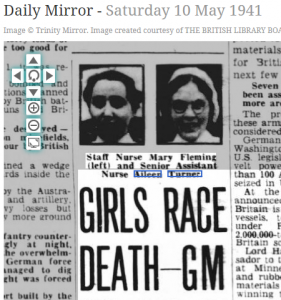The 1931 census records showed that more than half a million Irish-born people were living in Britain, the majority of whom were women. Most arrived not as members of as young, single migrant workers. During the 1940s and 1950s, large numbers of Irish women were recruited as student nurses. By 1951, 11 per cent of nurses and midwivesin Britain were Irish. THE NHS could not have survived without the contribution that was made by its nurses form overseas.
The migration of Irish men and women to Britain in the Second World War to do war-work was continuous with a long history of Irish men and women migrating to Britain for employment. Both ‘push’ and ‘pull’ factors brought them to the country. During the Second World War, ‘push’ factors were unemployment and/or low wages in Southern Ireland and ‘pull’ factors were plentiful employment and relatively higher wages in Britain.
Nursing in England was an attractive career for a young Irish woman from a humble background. Training to be a nurse in Ireland cost money but in England , nurses were trained for free. They were also provided with accommodation and security which that brings. Ideal for a young woman arriving in a new country.
What’s the Story? by Maureen Alcorn is an imagined
piece, written to pay tribute to two  very brave women- Aileen Turner and Mary Fleming, two nurses who worked in a TB hospital in Grove Park, South London. TB was a highly contagious disease, and little is known about why Aileen and Mary were drawn to work in this field.
very brave women- Aileen Turner and Mary Fleming, two nurses who worked in a TB hospital in Grove Park, South London. TB was a highly contagious disease, and little is known about why Aileen and Mary were drawn to work in this field.